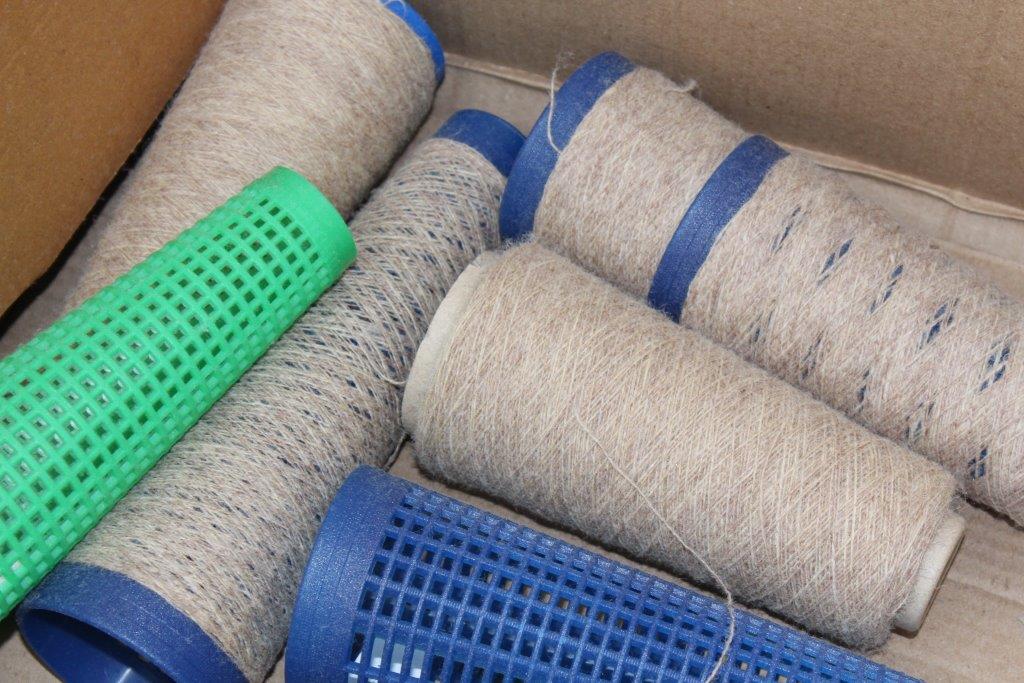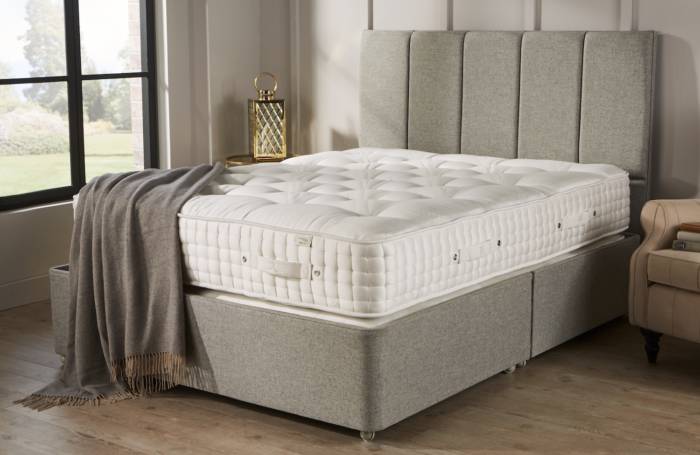Mattress Tips
March 2019What Are The Best Fibres to Look For When Buying a New Mattress?
There’s an abundance of different mattress fibres out there to choose from. Confusing buzz words, blends and ‘luxurious’ marketing talk. It can become exhausting trying to work out exactly what is in your potential new mattress purchase. This article will help you cut through all that and become a bed buying expert when it comes to fibres in mattress upholstery.
The entry level being synthetic man-made fibres moving up to the high end 100% Natural fibres. Often retail sellers and manufacturers will provide nothing but confusion for you with their product descriptions. If you’re looking to buy a new mattress, then it’s vital that you can see through these lacklustre product descriptions, and find the best mattress fibres for you. If the description doesn’t deal in specifics then you need to question whether the mattress is good value or not.

You may have seen descriptions such as ‘contains’ or ‘featuring’ natural fibres but these can often be used as ways to avoid detailing the real contents of your mattress. Did you know for example the phrase ‘Contains Silk’ can mean that there’s just 1% actual silk fibre blended with 99% polyester or white fibre in a mattress? Shocking but true. So let’s explain the difference between fibres in your mattress.
What’s the difference between Synthetic and Natural Mattress Fibres?
Synthetic fibres should be seen as the entry level in mattress and bed fibres. Materials such as ‘white fibre’, polyester or foams will be found in entry-level mattresses. This is because they are relatively cheaper to produce than Natural fibres. There is nothing wrong with synthetic fibres, it’s more the price you’re going to pay for your mattress. Our Origins Range provides an unbeatable set of entry-level mattresses to compare what you should expect for your money. The issue with synthetic fibres is they are far more heat-retentive compared to a natural fibre such as Wool. This is because they are usually far less breathable. They also have a shorter shelf life in a mattress, so you need to balance the cost vs the lifespan of a synthetic filled mattress.

They do allow manufacturers to make mattresses that are around the £500 mark for a quality pocket sprung kingsize mattress. If you’re looking at a mattress that retails around the £900 for a king size you should be looking to move away from synthetic fibres and see at least a 50/50 Natural fibre to synthetic split with pocket springs.

If you want the best quality of mattress components for your money then It’s far better for you that you go with the more responsive, durable and breathable option of Natural Fibre mattresses. Quite often the price difference between the top end synthetic and entry level natural fibre mattress isn’t that huge. See the Artisan 1500 compared to the Origins Pocket 1500 for example.
How are Natural Fibres used?
When buying a new mattress carefully reviewing the Natural Fibres content of a mattress is really important. Natural fibres are those which come from either animal or plants, if you want to read more theres a really detailed guide here. You’re wanting to know the exact GSM of these fibres and secondly whether they have been blended with other ‘synthetic’ or lower cost fibres. However, it’s also important to understand exactly how they are used within the mattress, in order to decide if you’re truly purchasing a well designed quality bed.
When we talk about how the fibres are used, we’re talking about the Mattress Upholstery, which can be broken down into three stages during the mattress construction. Upholstery provides you with the ultimate feel (Soft, Medium or Firm) in a mattress.
The support layer

This first layer sits directly on top of the spring unit and should have firm supportive properties. Natural fibres such as Horsehair or Coarse Cashmere are often used in this layer as they make excellent insulators, as is the case with our Artisan 1500. They give a level surface for the softer layers above it, reducing the chance your mattress will sag and dip. If you see a mattress that has a support layer entirely made of Wool (which is a soft fibre) you know the mattress is going to compress far quicker than one with Coarse Cashmere or Mohair for example.
The bridge layer

The fibres within this second layer are intended to provide you with both support and comfort, and can consist of a few variations; from Blended horsehair and Wool or Bonded Wool and Cotton. Horsetail is one of the most popular fibre options because it can serve as a secondary spring unit when used further up in the upholstery. The hair is twisted as it is cleaned, rolled and then heated up to sterilise the fibre. This means that when unravelled each horsehair has a twist and spring-like quality to it. Thanks to its resilience and comforting properties, Wool as a mattress fibre is also a top choice.
The comfort layer

This layer provides you with the overall ‘feel’ of the mattress, and it’s integral to giving you that comfort you need to drift off to a peaceful slumber. Like with the other layers used above the spring and support unit, these comfort layers should consist of a number of high-quality Natural Fibres. Whether it be Silk, Bamboo, Swaledale Wool, Cashmere or Blended Wool and Cotton. You need to know exactly what the layers are, especially if the retailer can’t tell you the GSM, to be able to adequately check whether the mattress is going to be suitable. One of the finest fabric options is Alpaca, which is renowned for being both breathable and sumptuously soft. The fibres of Alpaca wool are the finest of all natural fibres which gives them a super soft and delicate feel to them.
The fibres enhance the feel
It’s important to remember that the above are just examples of the quality Natural Fibres that can be used in each layer of your mattress upholstery. The variables are near endless, and there are subtle differences in how the mattress will feel for you, depending on the layers used. The general rule of thumb is that you layer the firmer (more supportive) fibres first and they layer up softer layers. You wouldn’t, for example, want soft Lambs Wool, underneath say a Mohair layer.
Different comfort layer fibres are usually layered and coupled together with other fibres to create a Luxury Natural Fibre Mattress. They can also be interchanged to produce a more bespoke model that can better meet your particular preferences. For example, if you wanted a really soft top layer you may use Alpaca and Bamboo like our Artisan Sublime or for a firmer layer Wool and Horsetail like our Artisan Bespoke.
What’s the cost of Natural Fibres?
In terms of affordability, the lifespan of natural products far surpasses that of synthetic Man-Made Fibres, like polyester or foam. This is because Natural fibres are far more resilient as the Animals they are sheered from having to withstand the elements outside. The reason they are a higher cost is that it’s more expensive to rear and sheer these fibres. Whereas man-made fibres are always in abundant supply and are cheap to manufacture; which is why they are often used in low price range mattresses. Natural Fibres, on the other hand, are found in high-end mattresses and beds, generally due to the processing costs involved, the comfort they bring to a bed and their limited availability.
| Natural fibre | Cost / Availability |
|---|---|
| Alpaca | Very expensive (low supply chain) |
| Bamboo | Average price (good supply chain) |
| Camel | Very expensive (low supply chain) |
| Cashmere | Expensive (good supply chain) |
| Cattle Hair | Average price (good supply chain) |
| Coir | Average price (good supply chain) |
| Cotton | Very expensive (good supply chain) |
| Flax | Average price (good supply chain) |
| Hemp | Average price (good supply chain) |
| Horsetail | Very expensive (low supply chain) |
| Horsehair | Less expensive (good supply chain) |
| Mohair | Expensive (low supply chain) |
| Silk | Very expensive (low supply chain) |
| Vicuna | Very Expensive (Most expensive natural fibre in the world) |
| Wool | Moderate to expensive (good supply chain) |
How can I tell if my mattress upholstery is high quality?

When it comes to the fibres used, it’s best to know the actual weight of a particular upholstery component within the mattress. Knowing your GSM will help you determine exactly how much a certain material has been used, and establish the quality of the mattress you’re considering. This allows you to accurately compare to other mattresses to see if you’re getting good value.
If you’re reading vague wholly descriptions with no GSM then we would advise you investigate other mattress options! The same can be said for mixed blended fibres. Unless you know the percentage of natural fibres contained they you really have no idea what you’re investing in. A good example of how to compare mattresses can be found here.
All of our mattress range details the full breakdown of GSM, spring type, spring tension and quantity. You should expect all quality mattress retailers to be able to supply the same.
If you have any more questions, don’t hesitate to get in touch with our expert team today on 0161 437 4419.

Dreaming of the perfect nights sleep?

Ask us a question
There are over 6000 questions and answers submitted by you on all questions about mattresses and bed problems. Enter a keyword such as Vi Spring, John Lewis beds, bad back or Memory Foam and see if your question has already been answered.
If you can’t find an answer in knowledge hub, ask a new question. We aim to respond to all questions within one working day.
Newsletter
Enter your email to join our newsletter. We’ll send you occasional news and mattress expertise.
